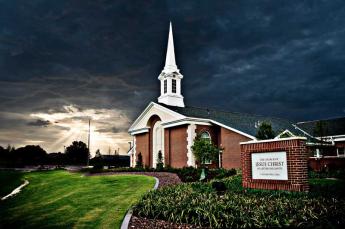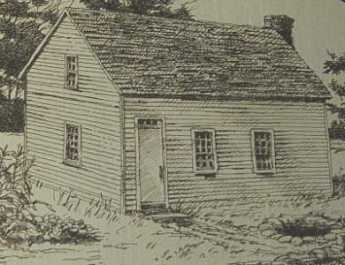Related Topics
Religious Philadelphia
William Penn wanted a colony with religious freedom. A considerable number, if not the majority, of American religious denominations were founded in this city. The main misconception about religious Philadelphia is that it is Quaker-dominated. But the broader misconception is that it is not Quaker-dominated.
Northern Overland Escape Path of the Philadelphia Tories 1 of 1 (16)
 Grievances provoking the American Revolutionary War left many Philadelphians unprovoked. Loyalists often fled to Canada, especially Kingston, Ontario. Decades later the flow of dissidents reversed, Canadian anti-royalists taking refuge south of the border.
Grievances provoking the American Revolutionary War left many Philadelphians unprovoked. Loyalists often fled to Canada, especially Kingston, Ontario. Decades later the flow of dissidents reversed, Canadian anti-royalists taking refuge south of the border.
Central Pennsylvania
"Alabama in-between," snickered James Carville, "Philadelphia, Pittsburgh, and Alabama in-between."
Great Bend: Joseph Smith Translates the Golden Plates

|
| Joseph Smith |
As the traveler up the Pennsylvania Turnpike Northeast Extension approaches the New York border, there's a chance for a fleeting glance at an exit sign pointing to Great Bend, without additional comment. The comment is definitely needed because a ten-mile detour at this point is rewarded by two interesting attractions. In the first place, the Susquehanna does indeed make a great bend there. Starting in Cooperstown, New York at a beautiful mountain lake which resembles Lake Geneva in Switzerland, the Susquehanna heads south for ninety-six miles and then turns around at Great Bend and goes back fifteen miles north to Binghamton. After that, it goes west for forty miles to Sayre and then goes south again as it picks up other branches. Greatly enlarged, it reappears to Turnpike travelers at Wilkes Barre. Thousands of travelers have sped up the wide valley without noticing that the same river which flows south from Wilkes Barre apparently starts flowing north at Great Bend. The traveler's eye is deceived by the apparently continuous long valley which the highway follows. At Binghamton, the Susquehanna starts flowing west, but that too is overlooked in whizzing past the cloverleaves and traffic directions. The Great Bend itself is a lovely water gap with a couple of small towns on its shores, but is otherwise pretty deserted.
For two and a half years, Joseph Smith the founder of the Mormon religion spent full time five miles away from the Turnpike exit, at the real bend in the river (not the town of Great Bend) writing the 275,000 words of the Book of Mormon. Although Smith was a native of Palmyra, New York, and Mormonism is most easily viewed as an outgrowth of wide-spread religious uproar in upper New York State during the 1820s, it undoubtedly provoked malicious gossip from those who resist all claims of miracles, as well as staunch defense from those who believe. It's comparatively safe to say the prophet was living at the Great Bend in his wife's tiny home while she wrote down his dictated translation. The source of his vision was said to be John the Baptist, which others have since taken literally to varying degrees. Those who believe in the pregnancy of virgins and reappearances after a death must be tolerant of the sometimes overstated beliefs of others. Smith never let anyone see the golden plates from which the writings were derived, however, and ultimately it must rest that he was relating what he believed he had seen. His father-in-law described him as a charlatan, an attitude not completely rare among other fathers in law. His wife, caught between conflicting family loyalties, declined for years to join the religion that flowed from her own pen.

|
| The Church of Jesus Christ of Latter-day Saints |
However, with the publication of the Book of Mormon, Smith rapidly gained adherents numbering in the thousands. He moved the center of the religion westward in several steps and was shot to death by a mob, variously styled as militia and vigilantes, in Illinois at the age of 38. Just who killed him and what the motives were are matters we normally leave to courts rather than newspaper accounts. There is little doubt that many other religions of the time were outraged by the tolerance of polygamy, and so the account that he was assassinated by offended husbands of those to whom he proposed marriage, must be somewhat discounted. All religious disputes have a tendency to get out of hand, and the frontier religions of that time were particularly feverish, flaring up in an environment of the rule of the six-gun.

|
| Joseph Smith House |
The attraction of this religion seems to an outsider to have been based on its forgiveness for sinners, offering them tolerant heaven rather than the vindictive hellfire and brimstone which more puritanical protestant sects at that time envisioned for even well-behaved converts. There is a certain echo in Smith's Mormonism of the tolerant Quaker view that "There is that of God, in everyone." Similarly, although it is difficult to accept his idea that the American Indian tribes might be descendants of a lost tribe of Israel from the 7th Century B.C., the Mormon, and Quaker, teaching of tolerance to the Indians was in keeping with changing racial views in the early 19th Century, and softens somewhat the former Mormon distrust of the black race; although that, too, must be seen in the context of the then-approaching Civil War.
The best-known feature of this religion used to be polygamy, however, which is difficult to defend with theological, demographic or even romantic reasonings. With a few exceptions among Mormon extremists, the religion has moved away from any defense of polygamy. As the center of Mormonism moved to Utah, Congress outlawed polygamy, and the church officially condemned the practice and gave it up. Since it is still not rare to encounter a kindly decent gentleman on the streets of Salt Lake City whose grandmother or great-grandmother had been a polygamous wife, the whole subject has come to be treated there as an ancient embarrassment, best left unmentioned, but never quite forgotten. As a matter of fact, all religions have so much to account for in their past that they are most fairly judged by the sort of behavior they seem to inspire in their followers. By that standard, the earnest, decent, hard-working Mormons of today have earned their right not to be sneered at.

|
| Great Bend PA |
As for the simple little memorial along the river, it may seem a disappointment to some. It has not been made into a tourist attraction or a place of pilgrimage. It may even be a little unprotected from vandalism. But is surely worth the small trouble to visit, adding only half an hour to anyone's trip. One does not have to accept either the history or the theology in order to wish to see the place, which is a sweet little neglected clearing with a railroad running between it and the river. As a backdrop, the great bend in the Susquehanna is a remarkable sight in itself, because the river seems to be running in the wrong direction while no one notices. But one final double-take about polygamy simply cannot be resisted. One of the members of the Right Angle Club spent many years in the Middle East as a diplomat, where every Muslim man is permitted to have four wives. He reports that the younger Muslim men will often have nothing whatever to do with polygamy. Having watched the scheming, conniving jealousies of that custom from a front-row seat, the sort of Arab who always wears western clothes has firmly decided from personal observation that one woman, or at least one woman at a time, is quite enough.
The newspapers tell us a Mormon tabernacle or church may soon be constructed near the new Barnes Museum on the Parkway in Philadelphia. It could even resemble the one in Washington DC, with a statue of the Angel Moroni, blowing a gleaming gold trumpet. The Mormons seem to want Philadelphia to notice them and form an opinion, which indeed we probably will.
Originally published: Monday, August 09, 2010; most-recently modified: Tuesday, May 21, 2019
| Posted by: carperry | Feb 3, 2015 1:28 PM |
| Posted by: Wally | Sep 3, 2010 12:52 PM |